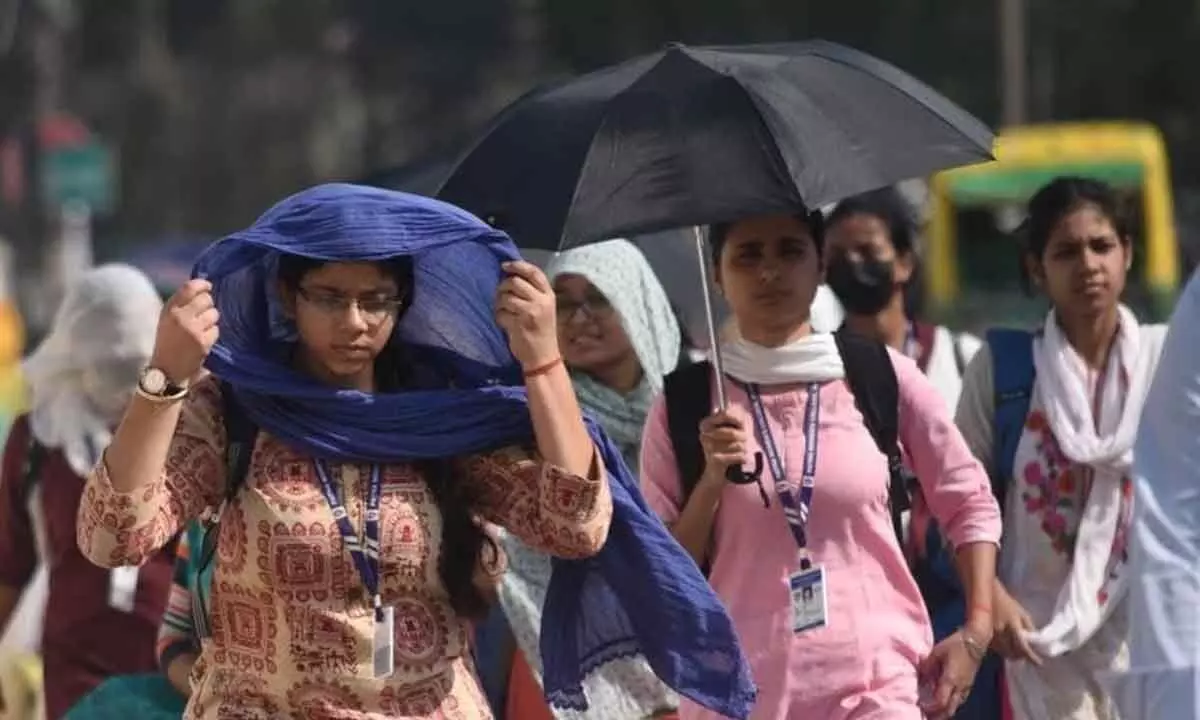Bengaluru beware! Summer of 2024 is just a sneak peek

Science also stipulates a 33 per cent green cover – about 1.15 trees per person – for “overall improvements in human well-being and community vitality. The garden city falls short of even the basic requirement. Going by population, in Bengaluru, we have only 17 trees per 100 persons
Bengaluru: Bengaluru’s summer of 2024 is just a sneak peek into the future, if you go by what the experts predict. The city, which lost its green cover by 66 per cent, water bodies by 74 per cent, and witnessed a growth of 584 per cent in built-up area – as per Centre for Ecological Sciences (CES) of Indian Institute of Science – buckled under the El Nino’s assault this summer. Things will get worse if the trend continues: By 2038, CES predicts that forests will be reduced to 0.65 per cent (as per last census in 2022, it is 3.32 per cent).
Bengaluru city will be choked with paved surfaces (more than 98 per cent) and 69.90 per cent (from 55.71 per cent in 2022) in Bengaluru Urban will be paved areas by 2038, said a study by the CES. “The increase in paved surfaces and reduction in green spaces have contributed to the urban heat island effect in Bengaluru.
For instance, it increased land surface temperature (LST) from 33.04 degree Celsius (1992) to 41.4 degree Celsius (2017) from March to May,” said professor T V Ramachandra, coordinator of energy and wetlands research group at CES. According to him, decline in heat sinks (water bodies and green cover) has a negative impact on the local microclimate, evident from the reduced cooling effect and increase in land surface temperature.
“The urban heat island effect would enhance the ambient temperature and humidity levels, resulting in heat stress and heat-related illnesses,” added Ramachandra. Bengaluru’s famed “mild weather” is not just nature’s gift but also the prescience of its early settlers, who understood the pulse of nature, said Harini Nagendra, professor of ecology at Azim Premji University.
Nagendra’s book, ‘Nature in the City: Bengaluru in the Past, Present and Future’ compares the past and the present of the IT hub to give solutions to its future. The inscription stones left behind by early settlers, said Nagendra, tell us that they had a ‘three-dimensional sense’ of the landscape. “For instance, when constructing a new lake, the ‘plan’ would include the wells below and the trees above,” Nagendra told PTI.
So along with water bodies – the reason why Bengaluru used to be riddled with lakes, like Swiss cheese with holes – the early settlers also put in place what is called ‘gundathope’, said Nagendra. “Gundathopes are orchards or wood lots. Locals say rulers Hyder Ali and Tippu Sultan started the trend, which was later adopted by the British. Around every village there were three to four of these gundathopes where people would plant trees – they could be jackfruit or mango or other shade trees. They became gathering places for people. They were also ecological resources, making the climate cool, offsetting the heat effects.
“The open wells and lakes that were part of these gundathopes provided water to people, especially during summer because Bengaluru has always been this unusual semi-arid city, which doesn’t get a lot of rainfalls that it needed to harvest every drop of water that it gets,” added Nagendra. Science only proved what our ancestors already knew.
Way back in 2011, Shrinidhi Ambinakudige, a professor in the department of geosciences at Mississippi State University, used temperature values extracted from the Landsat satellite’s Enhanced Thematic Mapper Plus thermal bands and a ‘normalised difference vegetation index’, to ascertain the relationship between vegetation cover and temperature in Bengaluru. He concluded that where the green cover is significant, like the city core, there is significantly lower mean temperature.
Nagendra also said the research done by her team in different parts of Bengaluru has shown the relation between trees and air temperature. “We found that trees reduce suspended particulate matter and soot in the air. But very importantly, they also cool the city.
This is critical as we have lost wetlands and lakes to concrete. Concrete absorbs heat during the day and retains it at night. So, the next day is even hotter as the heat has not been released back to the atmosphere,” said Nagendra.
She said trees, which cool temperature down because leaves transpire, play an even important role now. “If you look at the ambient temperature, which is air temperature around our mouth level, it could be 3 to 5 degrees cooler under the shade of a tree. But if you look at the surface road temperature it would be cooler by 23 degrees or even more, which really makes a huge difference. Because it could be around 65 degrees Celsius on the tar road surface, but only around 30 to 35 degrees Celsius under the tree-shaded surface,’ added Nagendra.
Science also stipulates a 33 per cent green cover – about 1.15 trees per person – for “overall improvements in human well-being and community vitality”. “At last count, Bengaluru had 14,78,412 trees. So, the garden city falls short of even the basic requirement. Going by population, in Bengaluru, we have only 17 trees per 100 persons. If we calculate as per carbon-dioxide released by us, we will need seven to eight trees per person to combat deficiency in oxygen,” said Ramachandra.
The jury is certainly out: to prevent Bengaluru from sliding towards unliveable status, where summers turn sweltering hot, burning the mild weather claim to ashes, lakes must be revived, trees must be nurtured.














